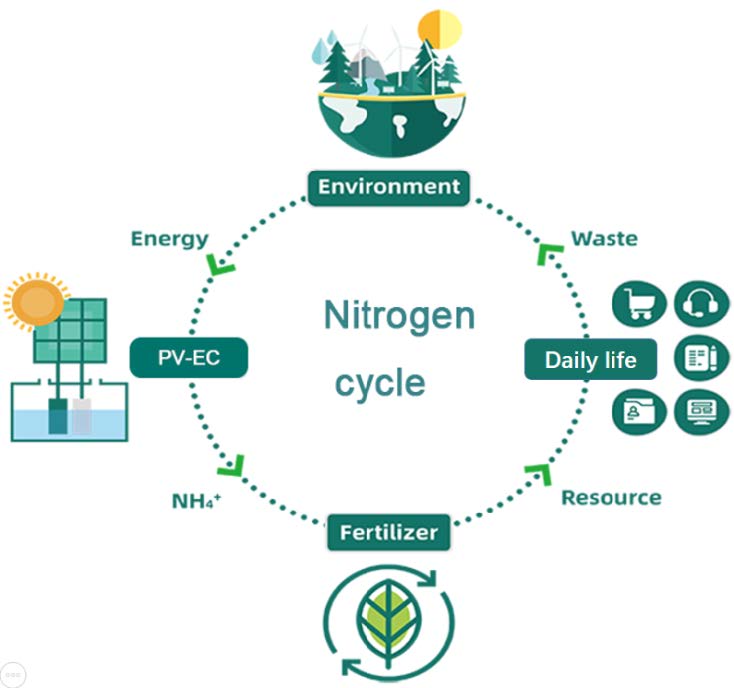Artificial nitrogen reduction to ammonia is essential to life on earth, offering essential nitrogen elements for biomolecules, commodity, and fuel chemicals. The industrial Haber-Bosch process established in 1913 provides half of the fixed nitrogen in the global nitrogen cycle nowadays. However, high energy intensity, harsh reaction conditions, and extensive carbon footprint remain to be resolved. In a recent work, Lu, Yuping, and Geoff showcased an oxygen vacancy-laden tungsten oxide (WO3-x) catalyst that can facilitate electrochemical (EC) activation and fixation of the N2 molecule in thin air into ammonia in a neutral electrolyte. The EC conversion can be enabled via green electricity generated by a photovoltaic (PV) panel and the ammonia productivity can be further promoted by solar irradiation in a electrochemical cell (EC). A detailed energy and economic technical analyses demonstrate the PV-EC WO3-x system as a viable, stand-alone, modular, distributed ammonia generation system envisioned for the future green ammonia sustainable farm. See full story at Journal of Energy Chemistry.
-
Recent Posts
- Congratulations to Geoff’s solar ethene and hydrogen paper on Matter
- Congratulations to Geoff’s heterogeneous catalysis paper on Matter
- Congratulations to Geoff’s birthday paper of CO2 photocatalysis on Matter
- Could modified train cars capture carbon from the air? This team has a plan to make it happen
- Sand batteries that are dirt cheap
Recent Comments
Categories
Header Courtesy of Digital Westex

